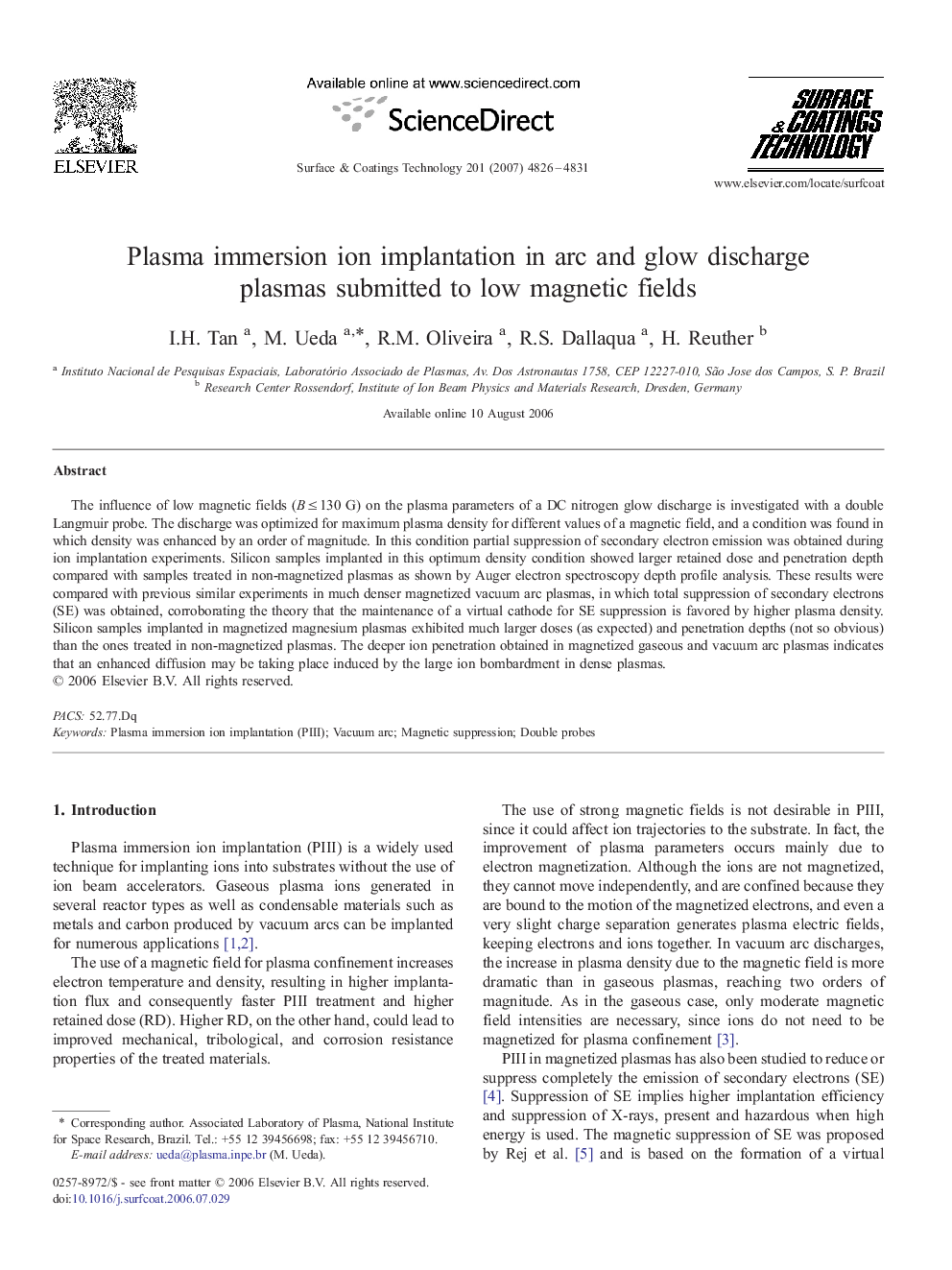| Article ID | Journal | Published Year | Pages | File Type |
|---|---|---|---|---|
| 1661531 | Surface and Coatings Technology | 2007 | 6 Pages |
The influence of low magnetic fields (B ≤ 130 G) on the plasma parameters of a DC nitrogen glow discharge is investigated with a double Langmuir probe. The discharge was optimized for maximum plasma density for different values of a magnetic field, and a condition was found in which density was enhanced by an order of magnitude. In this condition partial suppression of secondary electron emission was obtained during ion implantation experiments. Silicon samples implanted in this optimum density condition showed larger retained dose and penetration depth compared with samples treated in non-magnetized plasmas as shown by Auger electron spectroscopy depth profile analysis. These results were compared with previous similar experiments in much denser magnetized vacuum arc plasmas, in which total suppression of secondary electrons (SE) was obtained, corroborating the theory that the maintenance of a virtual cathode for SE suppression is favored by higher plasma density. Silicon samples implanted in magnetized magnesium plasmas exhibited much larger doses (as expected) and penetration depths (not so obvious) than the ones treated in non-magnetized plasmas. The deeper ion penetration obtained in magnetized gaseous and vacuum arc plasmas indicates that an enhanced diffusion may be taking place induced by the large ion bombardment in dense plasmas.
